The 1970s was a unique decade for interior design, where bold choices and experimental materials reigned supreme. Many homes across America featured furniture pieces that were more about making a statement than providing comfort or standing the test of time. Let’s take a nostalgic journey back to the era of shag carpets and wood paneling to revisit those ubiquitous furniture pieces that somehow found their way into almost every home, despite their questionable appeal.
1. Bean Bag Chairs

Those saggy, shapeless sacks filled with tiny foam beads promised casual comfort but rarely delivered. The moment you sat down, the beans would shift unpredictably, often leaving you practically on the floor in an awkward, inescapable position. Within months of purchase, the thin vinyl covers would crack and split, releasing thousands of tiny white beads that would haunt your vacuum cleaner for years. House & Garden writes that bean bag chairs may be lounging back to homes across the country, so get ready to get cozy.
Despite being notoriously difficult to get out of with any dignity intact, these chairs were considered the height of casual cool in rec rooms across America. Parents reluctantly purchased them for teenager’s rooms and basement hangouts, while secretly hating how they slumped formlessly in the corner, collecting dust and looking perpetually rumpled. The ’70s obsession with informal living spaces made these impractical seating options a must-have status symbol, even as everyone privately acknowledged they were neither comfortable nor attractive.
2. Papasan Chairs

These oversized wicker bowls balanced precariously on circular bases, featuring thick round cushions that promised exotic comfort. In reality, the poorly balanced design meant one wrong move would send you tumbling sideways, often taking a nearby lamp with you. The wicker frames frequently cracked under any substantial weight, creating sharp edges that snagged clothing and scratched bare legs. HowStuffWorks further explores the way the stars aligned to get this chair into homes everywhere.
The cushions, typically covered in some form of scratchy material in harvest gold or avocado green, slid around constantly and flattened quickly with regular use. Nevertheless, these unwieldy conversation pieces occupied prime real estate in living rooms everywhere, signaling worldly sophistication despite their impracticality. Everyone who owned one had a story about an unfortunate guest who tipped over during a dinner party, yet somehow they remained living room staples throughout the decade.
3. Waterbeds
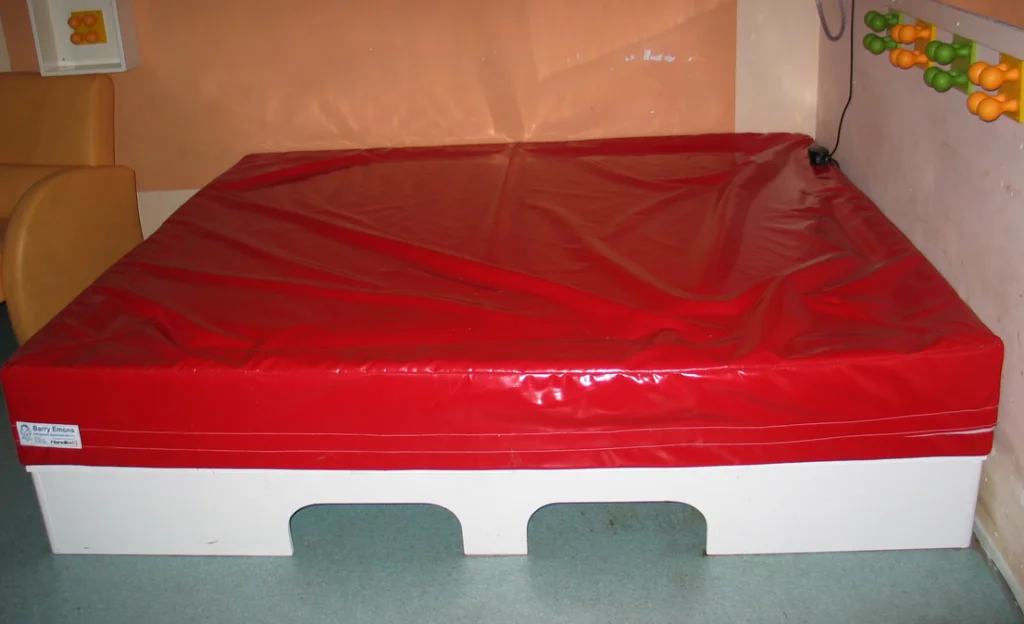
The pinnacle of ’70s bedroom aspiration, waterbeds promised revolutionary sleep but delivered a host of unexpected problems. Filling and maintaining these sloshing mattresses required dedicated equipment, special chemicals, and the constant fear of catastrophic leaks that could flood an entire bedroom. The vinyl covering often became uncomfortably sweaty in summer and freezing cold in winter, requiring expensive heaters that hummed all night. Dwell writes that there seem to be attempts at driving a comeback for waterbeds, so get ready to see these make a splash again.
Getting in and out of a waterbed was an awkward balancing act, and any movement created waves that could disturb a sleeping partner for minutes afterward. Despite these drawbacks and the genuine risk of structural damage to older homes, these heavy, high-maintenance sleep systems became the must-have bedroom centerpiece for an entire generation. The status they conferred apparently outweighed the backaches, temperature issues, and constant maintenance they demanded.
4. Parson Tables

These plain, straight-lined tables covered in plastic laminate somehow became the standard for dining areas across America. With their simple square legs and perfectly flat tops, they offered absolutely no decorative details or design interest to justify their ubiquity. The laminate surfaces, often in faux woodgrain or solid colors like burnt orange, showed every scratch and resisted all attempts at repair.
The matching chairs featured thick vinyl padding that cracked along the seams after minimal use, especially in homes with air conditioning. Despite their complete lack of character or craftsmanship, these dining sets appeared in countless homes, apartments, and breakfast nooks throughout the decade. Their popularity seemed driven more by mass marketing and availability than by any genuine appreciation for their aesthetics or functionality.
5. Macramé Hanging Chairs

These suspended seats woven from countless knots promised bohemian charm but delivered discomfort and instability. The rope designs stretched unevenly with use, creating lumpy, asymmetrical seating that left temporary grid patterns pressed into the backs of unwary sitters. Installation required finding ceiling joists capable of supporting swinging human weight—a challenge many homeowners addressed with inadequate hardware that threatened to collapse at any moment.
The natural fiber ropes collected dust and proved nearly impossible to clean properly, while the fringe elements became magnets for curious pets and toddlers. Despite these practical concerns, these precarious perches hung in corners of living rooms and sunporches across America, signaling countercultural sensibilities even in the most conventional suburban homes. Most were eventually relegated to storage after one too many tipping incidents or when the ropes became irredeemably grimy.
6. Mediterranean-Style Dark Wood Wall Units

These imposing, ornately carved entertainment centers dominated living rooms with their massive footprint and excessive decorative detailing. Featuring a combination of open shelving, closed storage, and designated spaces for enormous console televisions, these behemoths consumed entire walls with their dark, heavy presence. The tortured pseudo-Spanish details—twisted columns, arcaded shelving, and machine-carved “distressing”—collected dust in countless crevices that defied regular cleaning.
The dark finish made already small rooms feel cave-like, while the imposing height created out-of-reach storage spaces that eventually became museums of forgotten objects. Despite overwhelming spaces and creating gloomy atmospheres, these furniture monsters represented success and substance in middle-class homes nationwide. Their sheer mass and weight made them nearly impossible to discard, which explains why many survived in basement rec rooms well into the 1990s.
7. Chrome and Glass Tables
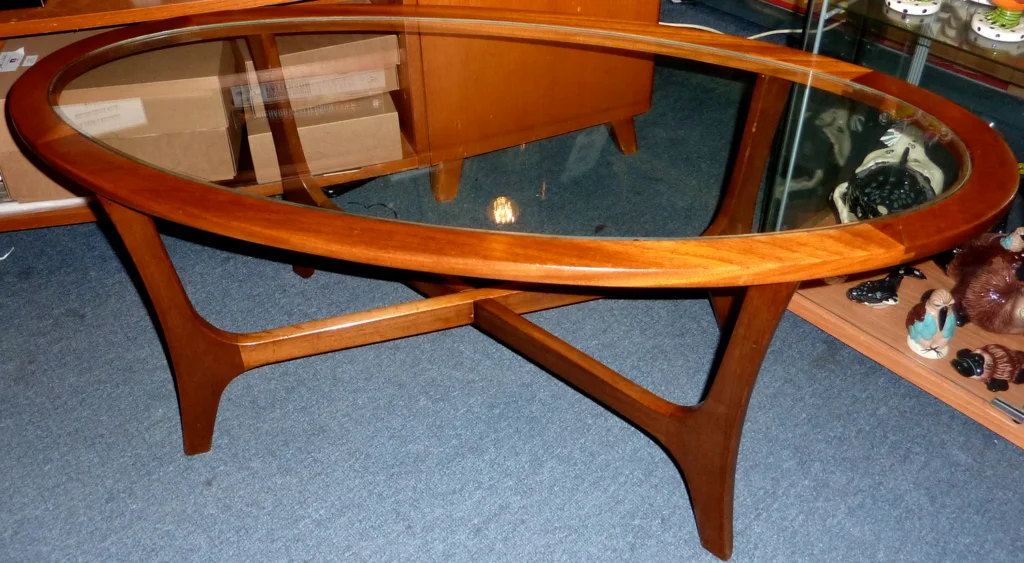
Nothing said “modern” in the ’70s quite like the gleaming combination of tubular chrome and smoked glass surfaces. These trendy tables featured impossibly thin glass tops that showcased every fingerprint, dust particle, and water ring while posing constant safety concerns. The chrome legs scratched wooden floors, collected smudges that required constant polishing, and proved unstable on shag carpeting.
The glass surfaces were perpetually cold to the touch and created nerve-wracking environments for families with young children or lively pets. Nevertheless, these fragile, impractical tables became standard issue in fashionable living rooms across America, pairing awkwardly with plush, comfortable seating pieces. The contrast between their cold, hard surfaces and the era’s otherwise soft, tactile aesthetic perfectly embodied the decade’s sometimes contradictory design impulses.
8. Rattan Peacock Chairs

These throne-like wicker statements with their dramatic fan-shaped backs consumed disproportionate amounts of floor space while offering surprisingly uncomfortable seating. The tightly woven natural fibers cracked and unwound with minimal use, creating sharp ends that snagged clothing and scratched skin. Their enormous proportions made them awkward to place in average-sized rooms, though that didn’t stop millions of Americans from trying.
The dramatic silhouette made them irresistible as photography backdrops, but their day-to-day functionality was compromised by unstable construction and poor ergonomics. These chairs represented the decade’s fascination with natural materials and tropical inspirations, even in homes thousands of miles from any beach. Despite being wildly impractical and surprisingly uncomfortable, their exotic appearance made them coveted status symbols in suburbia nationwide.
9. Plastic Modular Furniture
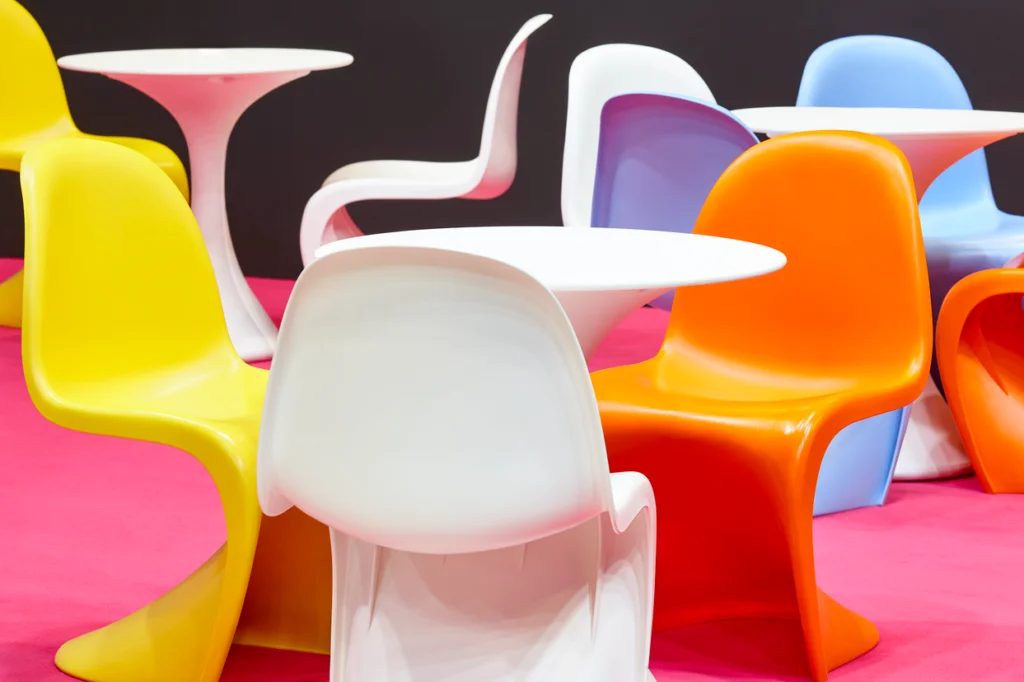
The space age fascination with synthetic materials reached its peak with these interlocking plastic furniture systems in vibrant colors. The hard, inflexible surfaces provided minimal comfort, while the hollow construction created cheap-sounding echoes whenever touched or moved. Summer heat could warp the pieces, creating unpredictable weak spots that might collapse under an unsuspecting guest.
The futuristic shapes prioritized visual impact over human anatomy, resulting in seating angles that no human spine was designed to accommodate comfortably. Despite their ergonomic failures, these colorful plastic puzzles represented cutting-edge modern design to style-conscious homeowners of the period. Their easy-clean surfaces appealed to practical housekeepers, even as family members privately longed for softer, more forgiving seating options.
10. Vinyl Recliners
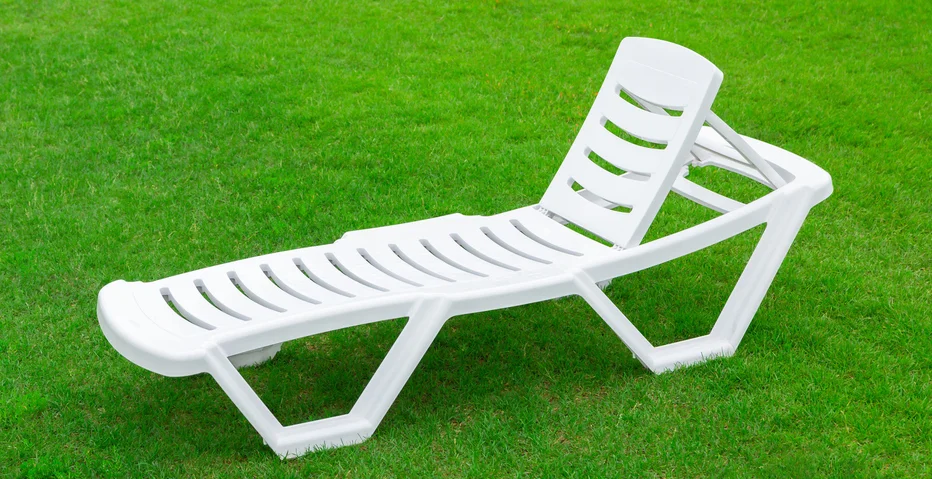
These massive lounge chairs covered in slippery, sweaty vinyl dominated family rooms across America. Available in colors like harvest gold, avocado green, and burnt orange, they featured mechanical reclining mechanisms that frequently pinched fingers and eventually broke down. The vinyl covering cracked along the seams and arm edges, often repaired with unsightly strips of duct tape that collected lint and hair.
In summer, these chairs became uncomfortably sticky against bare skin, while in winter, the initial contact with the cold surface caused an unpleasant shock. Despite these considerable drawbacks, these throne-like recliners represented the pinnacle of man-of-the-house comfort and were positioned in prime television-viewing locations in millions of homes. Their massive proportions made them nearly impossible to discard, explaining why many languished in basements and garages for decades after their prime.
11. Conversation Pits

These sunken seating areas became architectural status symbols, despite creating hazardous steps that caused countless stubbed toes and twisted ankles. Built-in sofas surrounding these pits featured cushions that couldn’t be flipped or rotated, resulting in uneven wear and premature sagging. The permanent nature of these installations made redecorating nearly impossible, locking homeowners into a specific furniture arrangement regardless of changing needs.
The cushion fabrics—often in bold patterns or shag textures—proved difficult to clean and showed wear quickly in these heavily-used areas. Despite these practical limitations, conversation pits represented the height of entertaining sophistication, allowing homeowners to demonstrate their commitment to the latest architectural trend. Many were eventually filled in and floored over when the novelty wore off and the impracticality became impossible to ignore.
12. Shag Carpet Toilet Seat Covers
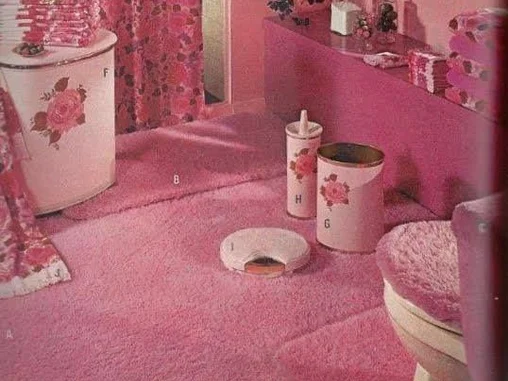
Perhaps the most questionable bathroom decision of the decade, these fuzzy toilet seat covers somehow became standard issue in bathrooms across America. The thick acrylic pile collected dust, absorbed moisture, and created ideal environments for bacterial growth in the most inappropriate location possible. Cleaning these unhygienic accessories properly was nearly impossible, though that didn’t stop them from appearing in countless homes.
Matching sets including tank covers and floor mats created cohesive bathroom ensembles in eye-searing colors like hot pink, electric blue, and vibrant purple. Despite obvious hygiene concerns and difficult maintenance, these bathroom accessories signaled dedication to complete decorating coordination. Their popularity persisted well into the decade, proving that sometimes design trends triumph over basic common sense and practical considerations.
The 1970s gave us many questionable design choices, but these twelve furniture pieces truly exemplify the era’s willingness to prioritize appearance over function. While we may look back with amusement at these impractical, uncomfortable, and sometimes unsafe furnishings, they represent a unique period of experimentation and expression in American home decor. Perhaps their greatest legacy is reminding us that sometimes the most popular trends are the ones that most deserve to be questioned.


